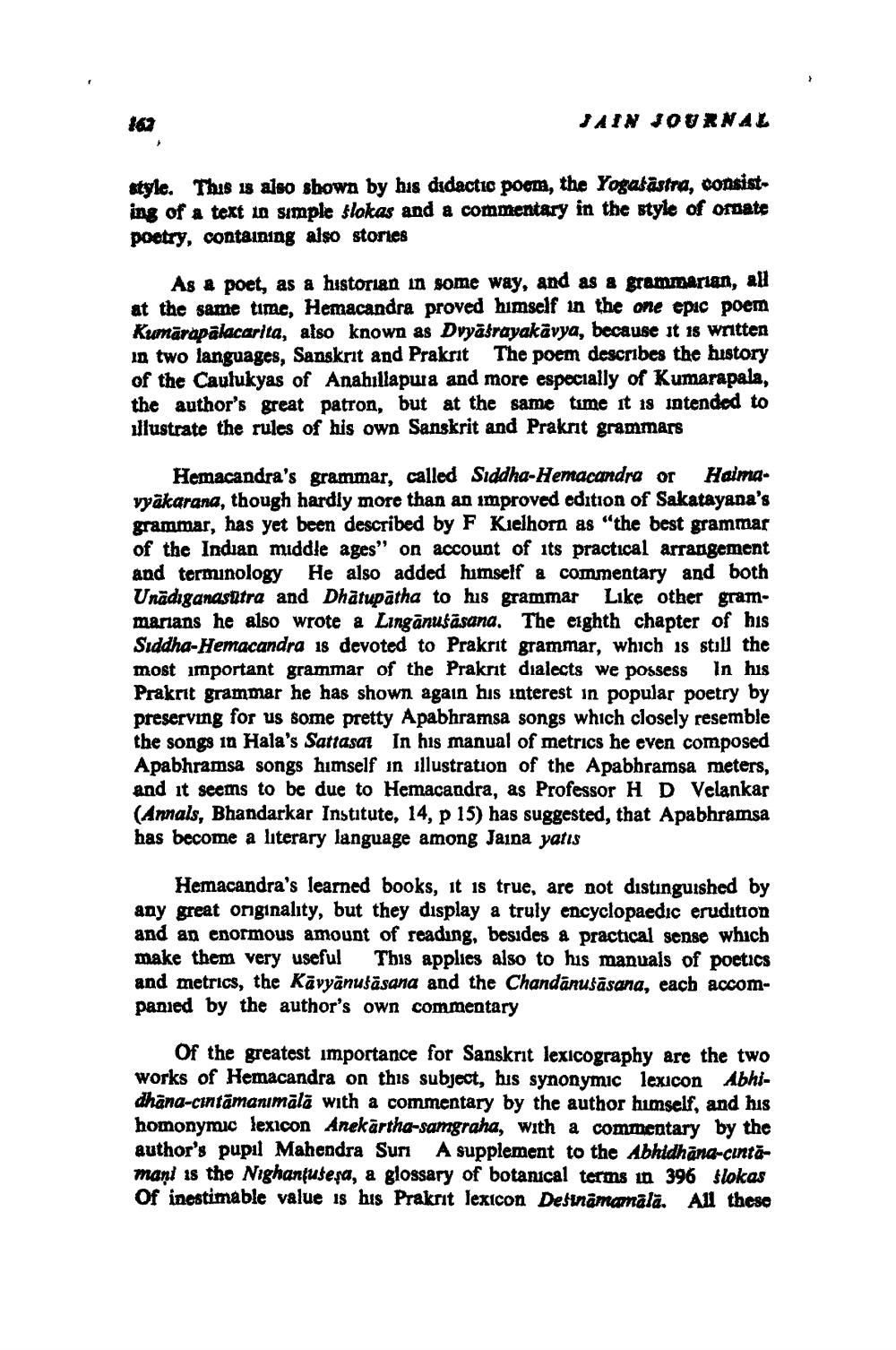________________
162
JAIN JOURNAL
style. This is also shown by his didactic poem, the Yogatastra, consisting of a text in simple slokas and a commentary in the style of ornate poetry, containing also stories
As a poet, as a historian in some way, and as a grammarian, all at the same time, Hemacandra proved himself in the one epic poem Kumarapalacarita, also known as Dvyatrayakävya, because it is written in two languages, Sanskrit and Prakrit The poem describes the history of the Caulukyas of Anahıllapura and more especially of Kumarapala, the author's great patron, but at the same time it is intended to illustrate the rules of his own Sanskrit and Prakrit grammars
Hemacandra's grammar, called Siddha-Hemacandra or Haimavyakarana, though hardly more than an improved edition of Sakatayana's grammar, has yet been described by F Kielhorn as "the best grammar of the Indian middle ages" on account of its practical arrangement and terminology He also added himself a commentary and both Unädiganasutra and Dhatupatha to his grammar Like other grammarians he also wrote a Lingānusāsana. The eighth chapter of his Siddha-Hemacandra is devoted to Prakrit grammar, which is still the most important grammar of the Prakrit dialects we possess In his Prakrit grammar he has shown again his interest in popular poetry by preserving for us some pretty Apabhramsa songs which closely resemble the songs in Hala's Sattasat In his manual of metrics he even composed Apabhramsa songs himself in illustration of the Apabhramsa meters, and it seems to be due to Hemacandra, as Professor H D Velankar (Annals, Bhandarkar Institute, 14, p 15) has suggested, that Apabhramsa has become a literary language among Jaina yatis
Hemacandra's learned books, it is true, are not distinguished by any great originality, but they display a truly encyclopaedic erudition and an enormous amount of reading, besides a practical sense which make them very useful This applies also to his manuals of poetics and metrics, the Kāvyānuṭāsana and the Chandānusāsana, each accompanied by the author's own commentary
Of the greatest importance for Sanskrit lexicography are the two works of Hemacandra on this subject, his synonymic lexicon Abhidhana-cintamanimāla with a commentary by the author himself, and his homonymic lexicon Anekartha-samgraha, with a commentary by the author's pupil Mahendra Suri A supplement to the Abhidhana-cintămani is the Nighantusesa, a glossary of botanical terms in 396 slokas Of inestimable value is his Prakrit lexicon Desinämamālā. All these




